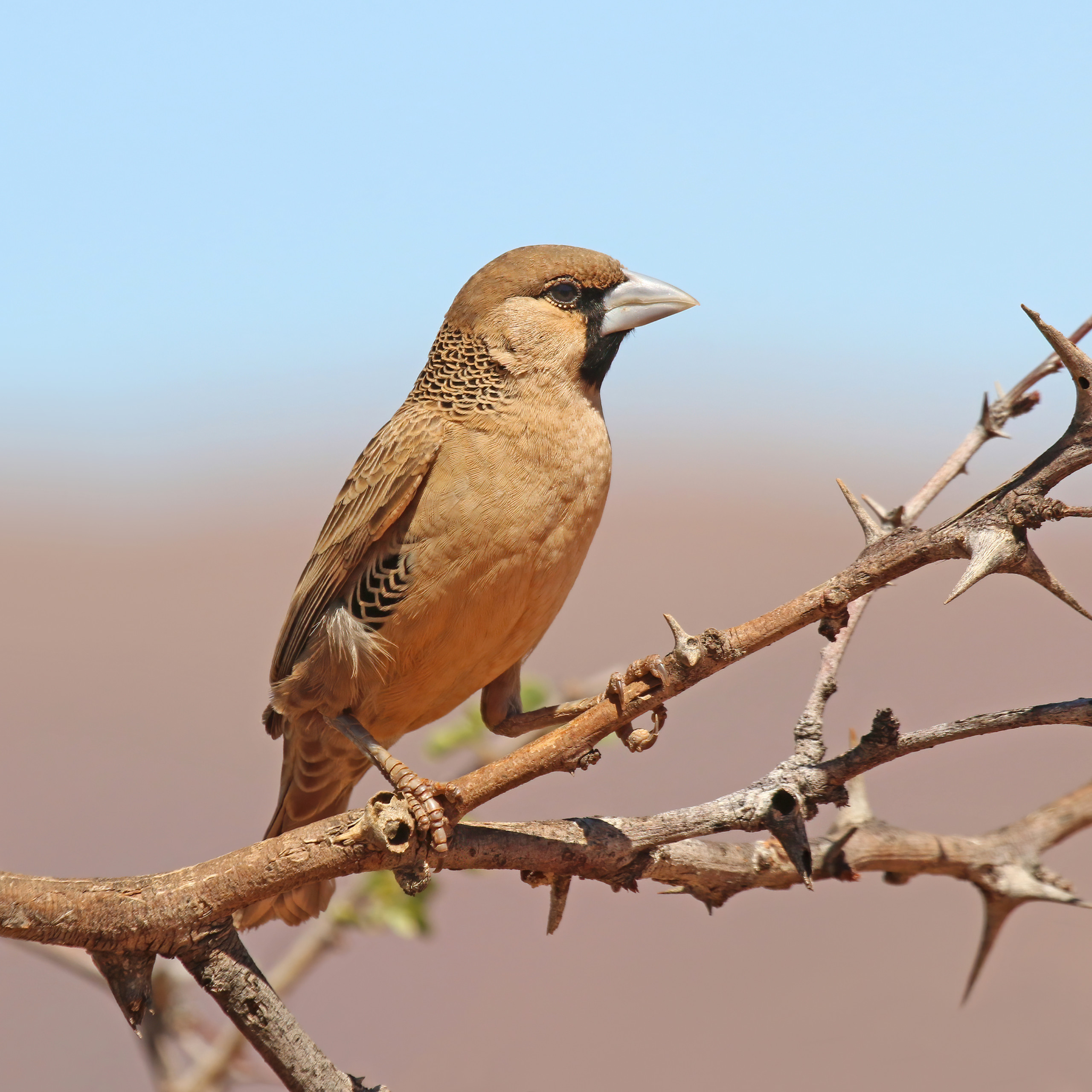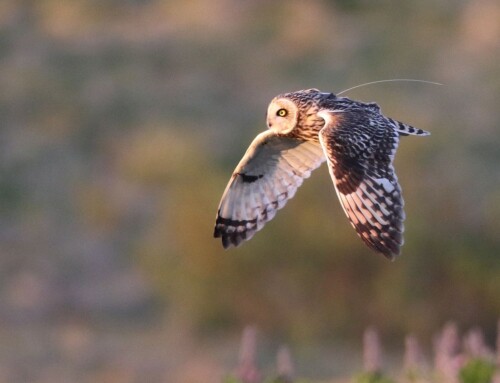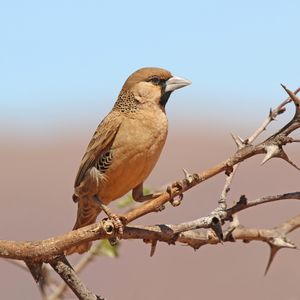 LINKED PAPER
LINKED PAPER
Ecological engineering across a spatial gradient: Sociable Weaver colonies facilitate animal associations with increasing environmental harshness. Lowney, A.M. & Thomson, R.L. 2022 Journal of Animal Ecology. doi: 10.1111/1365-2656.13688 VIEW
Sociable Weavers (Philetairus socius) are small passerines, which are endemic to southern Africa. They weigh around 15g but working together they can construct huge colonies that are recognised as some of the largest bird-built structures in the world. These colonies are a characteristic feature of the Kalahari, with each colony being unique in size and shape. Larger colonies can contain hundreds of individual nesting chambers and be home to hundreds of weavers year-round. Additionally, a wide range of birds and other species have also been documented using these colonies, including large raptors that nest on top of these structures, and smaller birds that roost inside weaver chambers (Lowney and Thomson 2021). For example, the African Pygmy Falcon (Polihierax semitorquatus) does not build its own nest and in southern Africa relies exclusively on Sociable Weaver chambers for nesting and roosting (Bolopo et al. 2019). Non avian species, such as the Kalahari tree skink (Trachylepis spilogaster) is found in greater numbers on trees containing weaver colonies than trees without (Rhymer et al. 2014). Large cats have also been observed climbing to the top of colonies to use them as vantage points (Lowney and Thomson 2021).

Figure 1 Sociable Weaver colony in a Camelthorn Tree (Vachellia erioloba) © Anthony Lowney.
Different species gain different benefits from Sociable Weaver colonies. Nesting chambers provide insulation against ambient temperatures, being warmer in winter and cooler in summer, a potentially crucial buffer against extreme temperatures in the harsh Kalahari (Lowney et al. 2020). The soils below weaver colonies are highly enriched with nutrients, and this is expected to have knock-on effects on the surrounding vegetation and the species that feed upon it (Prayag et al. 2020). The structures are maintained throughout the year, meaning that these colonies can remain in a landscape for decades, with reports that some are over a hundred years old. As a result, older and larger colonies may act as landmarks for any animal that uses them.
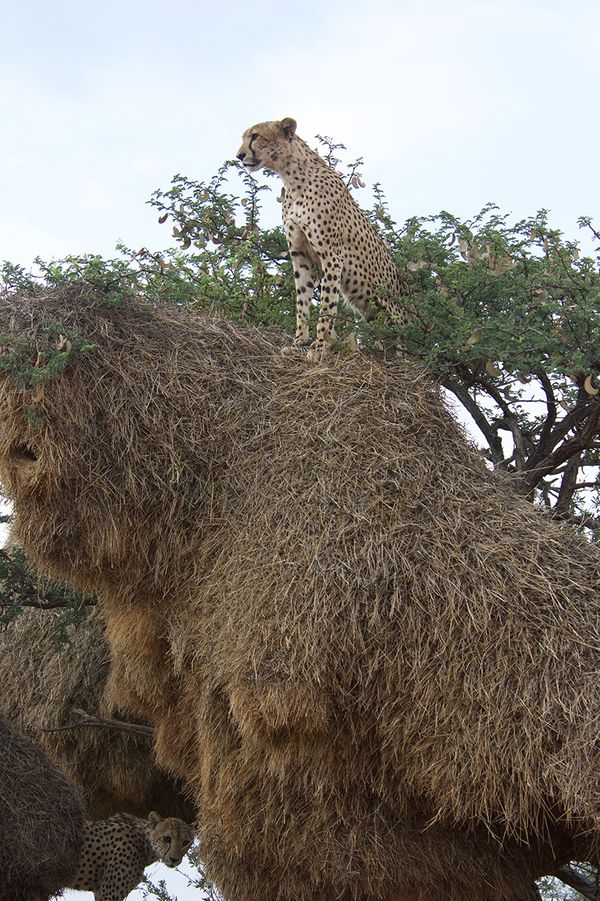
Figure 2 Photograph of two male Cheetahs on a Sociable Weaver colony © Liam Charlton.
Species that create habitats and change resource availability in such a way are called “ecosystem engineers” (Jones et al. 1994). Birds are often undervalued as ecosystem engineers, and this is surprising as nests can come in various shapes and sizes. Nests burrowed underground can alter vegetation structural complexity and vertebrate fauna (Bancroft et al. 2008), while large communal nests may provide resources for multiple species creating localised biodiversity hotspots (Lowney & Thomson 2021). Knowing which species are ecosystem engineers has scientific value, but further knowledge is gained by understanding the size of impact the engineers have on the wider community and if this changes through time and/or space. It has been predicted that the importance of such positive interactions will likely increase in harsher and more stressful environments (Bertness & Callway, 1994). This prediction comes from the stress gradient hypothesis, but ecologists have been slow to test this on animal communities, instead focussing on plant-plant interactions.
Our previous study in this system tested if the importance of resources provided by weaver colonies changed over time at our main study site Tswalu Kalahari (Lowney & Thomson, 2021). We found that these colonies created localised biodiversity hotspots and that this was maintained throughout the year. We received fascinating evidence that large mammals, used colonies for shade, foraged beneath or near colonies, and exhibited territorial behaviours at a colony (e.g., scent marking, fighting). We also found an overwhelming increase in the number of arboreal mammals using the top of weaver colonies, with species richness being 36 times greater in trees with colonies compared to trees without. Animals that climbed to the top of theses platforms included Slender Mongoose (Galerella sanguinea), Small-spotted Genet (Genetta genetta), African Wild Cats (Felis lybica) and Cheetahs (Acinonyx jubatus). It was obvious that these colonies were an important resource to animal communities in these environments, but we also wanted to check how this importance changed over a large spatial gradient.
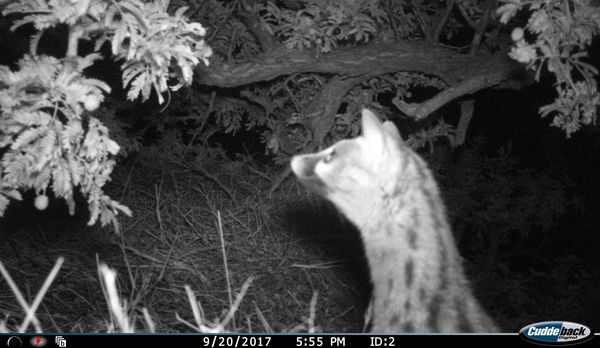
Figure 3 Camera trap image of a Small-spotted Genet on top of a Sociable Weaver colony.
In this new study, we surveyed invertebrates, reptiles, birds, and mammals that visited trees containing a weaver colony and compared these to nearby trees without a colony. All trees were of the same species, and paired trees were of similar size and structure. We used pan and pitfall traps to compare invertebrates, we observed and counted reptiles at a given tree and we used point counts to compare birds. We also carried out night visits to sociable weaver colonies to determine which other bird species were roosting in weaver colonies. Additionally, we used camera traps to monitor ground-dwelling, tree-climbing and arboreal mammals. These surveys were undertaken at eight sites across a >1000 km aridity gradient from the moderately mesic savanna Kalahari, through the dry Kalahari to the extremely dry Namib desert with the results being compared against rainfall and vegetation cover across this gradient. If the resources provided by weaver colonies positively influence local animal communities, then we would expect to find more animals using colony trees compared to non-colony trees. Additionally, to find support for the prediction of the stress gradient hypothesis, we would expect a greater positive impact of colony trees compared to non-colony trees at sites with lower rainfall and vegetation cover – meaning that food availability was also limited.
Our results demonstrate that sociable weaver colonies create localised biodiversity hotspots throughout their range, and that greater numbers of invertebrates, reptiles, birds, and mammals were all recorded at trees with colonies compared to those without. Furthermore, animal abundance changed as the environment changed with more animals being observed at wetter sites. However, trees containing colonies maintained localised bird and terrestrial invertebrate diversity as the environment became harsher, something that non-colony trees failed to do. Therefore, our results were consistent with predictions of the stress gradient hypothesis and as a result, we provide one of the first tests of this hypothesis in terrestrial animal communities and provide evidence that facilitation and amelioration by ecosystem engineers may mitigate some of the extreme impacts of environmental harshness.

Figure 4 Sociable Weaver colony in a Camelthorn Tree © Anthony Lowney.
References
Bancroft, W. J., Roberts, J. D., & Garkalis, M. G. 2008. Vertebrate fauna associates of the wedge-tailed shearwater, Puffinus pacificus, colonies of Rottnest Island: Influence of an ecosystem engineer. Papers and Proceedings of the Royal Society of Tasmania 142: 21-30. VIEW
Bertness, M. D., & Callaway, R. 1994. Positive interactions in communities. Trends in Ecology and Evolution 9: 187-191. VIEW
Bolopo, D. Lowney, A.L, & Thomson R.L. 2019. Helpers improve fledging body condition in bigger broods of cooperatively breeding African pygmy falcons. Behavioural Ecology and Sociobiology 73: 1-9. VIEW
Jones, C. G., Lawton, J. H., & Schachak, M. 1994. Organisms as ecosystem engineers. Oikos 69: 373-386. VIEW
Lowney, A.L, Bolopo, D., Krochuck, B.A. & Thomson R.L. 2020. The large communal nests of sociable weavers provide year-round insulated refuge for weavers and pygmy falcons. Frontiers in Ecology and Evolution 8: 1-13. VIEW
Lowney, A.L, & Thomson R.L. 2021. Ecological engineering across a temporal gradient: Sociable weaver colonies create year-round animal biodiversity hotspots. Journal of Animal Ecology 90: 2362-2376. VIEW
Prayag, K. D., du Toit, C. J., Cramer, M. D., & Thomson, R. L. 2020. Faunal input at host plants: Can camel thorn trees use nutrients imported by resident sociable weavers? Ecology and Evolution 10: 11643-11656. VIEW
Rymer, T.L., Thomson, R.L., Whiting, M.J. 2014. At home with the birds: Kalahari tree skinks associate with sociable weaver nests despite African pygmy falcon presence. Austral Ecology 39: 839-847. VIEW
Image credit
Top right: Sociable Weaver © Sharp Photography CC BY-SA 4.0 Wikimedia Commons.
If you want to write about your research in #theBOUblog, then please see here.


